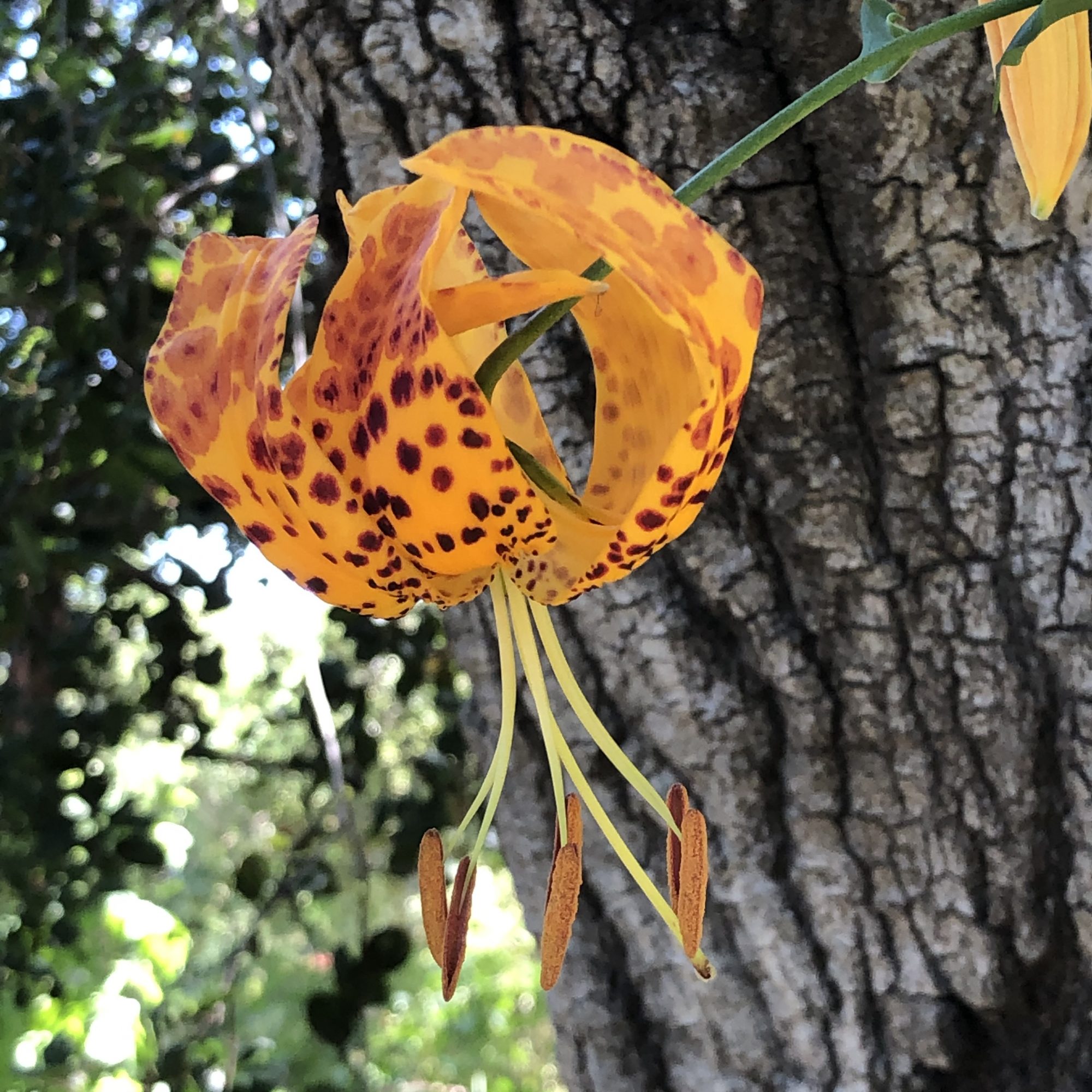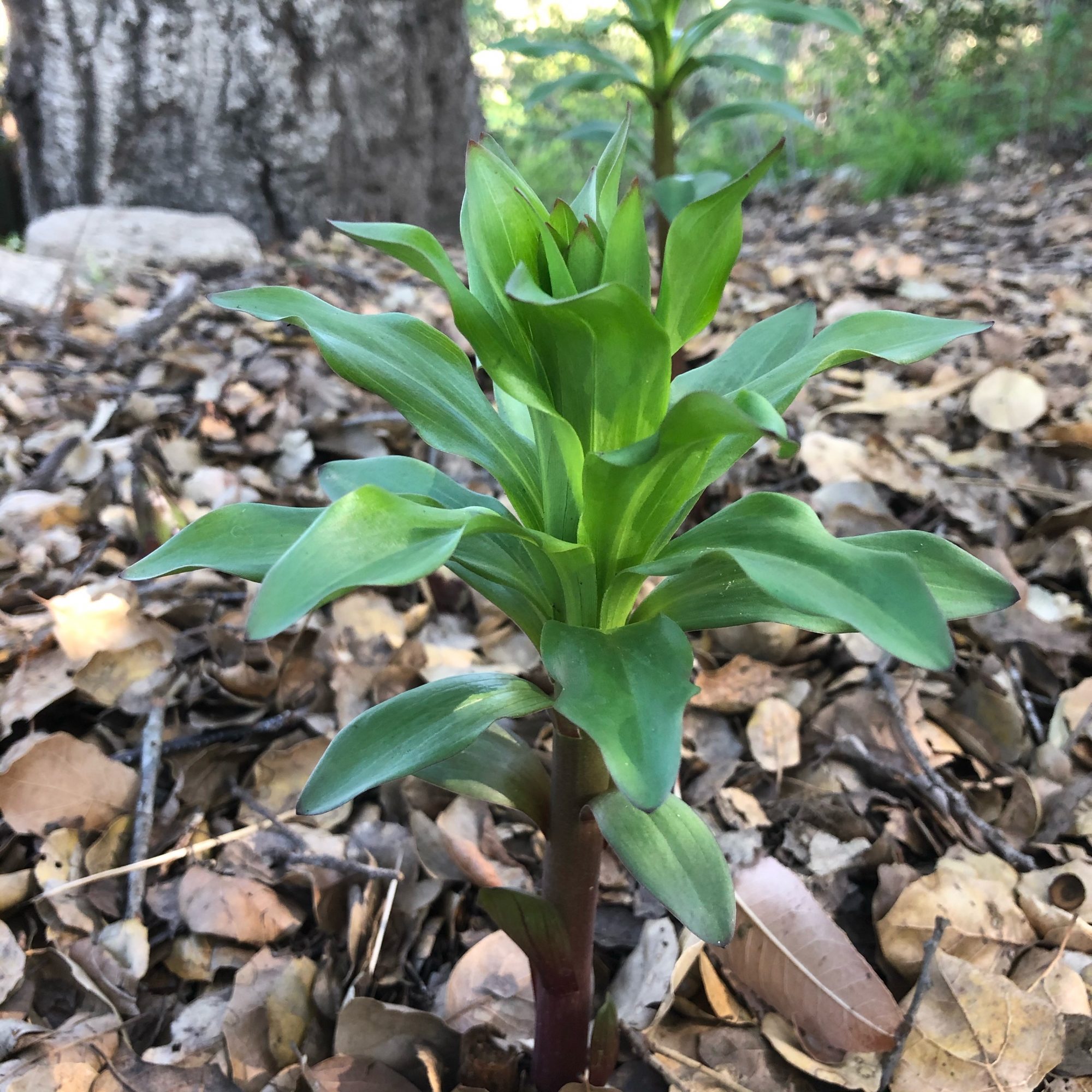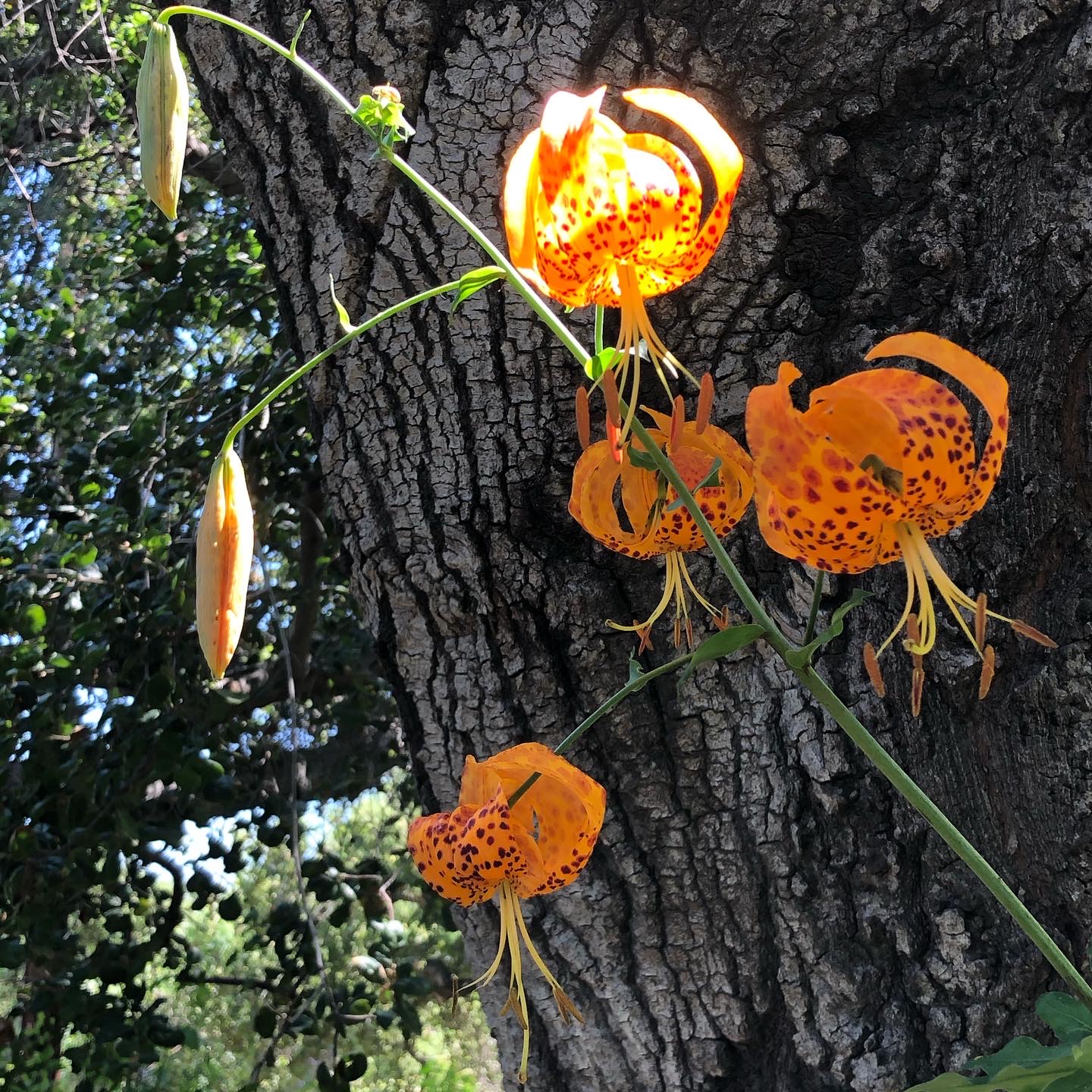Rendering the contrast even more striking is the fact that Lilium humboldtii var. ocellatum usually blooms late in May and throughout June, when spring’s wildflower show is winding down and the surrounding plants, among which it appears as an almost preposterously flamboyant apparition, are starting to shut down in preparation for the long, hot summer ahead.
Exotic Native The Glorious Spotted Humboldt Lily
To come upon a flowering Spotted Humboldt Lily (Lilium humboldtii var. ocellatum) in the wild is both rare and astonishing. Rare, because deer love to nip off its tender, (ostensibly) tasty flower buds before they have a chance to bloom; astonishing because the bright orange, maroon-dotted, lavishly petaled Spotted Humboldt Lily looks like something you’d find growing in a tropical jungle that somehow lost its way and ended up in the relatively stark landscape of Southern California’s mountain ranges.

Spotted Hulmboldt Lily: A Preposterous Apparition
Like many of California’s native geophytes (bulbs and corms), the Spotted Humboldt Lily’s cultural requirements can make adding it to your garden something that requires a little forethought. That’s because many native California bulbs need to be planted where they’ll remain completely dry after they flower and downshift into summer dormancy. This makes these geophytes incompatible with many typical garden settings requiring summer irrigation, in which the combination of high soil temperature and moisture can cause the bulbs to rot. This same cultural requirement, however – in addition to dappled shade and fast draining soil – makes the Spotted Humboldt Lily a perfect match for the understory of Quercus agrifolia (Coast Live Oak), which is its natural habitat in the wild.
Here at LANPS, we conceive of the understory of a mature Coast Live Oak as a kind of sacred space, one requiring a distinct set of conditions in order to both protect and promote the health of the tree. In addition to the vigilant removal of weeds, non-native grasses and exotic plants that don’t belong there, the most important rule when it comes to maintaining an oak understory is, arguably, to keep it largely free of supplemental irrigation during the dry season (March – September).
Sadly, we have seen century-old trees in the garden’s neighborhood succumb in just a few years to well-meaning but potentially lethal summer irrigation. So, you can see why the Oak and the Humboldt Lily, which co-evolved, would be a perfect match for one another. In fact, we believe that reintroducing companion species like the Spotted Humboldt Lily to an oak’s understory can actually help to improve the health and vitality of the tree as ancient relationships are rekindled via the “Wood Wide Web” of soil fungi through which plants communicate and share information and resources with one another.

Awakened by winter rains, a Spotted Humboldt Lily bulb pushes its shoot up through the oak duff at the LANPS garden. A mature bulb may send up a stalk as high as 10-12 feet before blossoming.
The Oak and the Humboldt Lily co-evolved and are a perfect match for one another.

Four years in the making – from seed to flowering plant
We started propagating Spotted Humboldt Lilies at LANPS from seed we originally obtained from a friend’s mountain property many years ago. It took about four years for these first plants to flower, but, as you can see, it was well worth the wait, and we now enjoy an ever more resplendent display each June.
Currently, LANPS has Spotted Humboldt Lilies in production, ranging from infants to adolescents, and they’ll be available for purchase as they approach maturity. In the meanwhile, if you’d like to try your own hand at growing Spotted Humboldt Lilies from seed, we also occasionally have packets available for sale. (A single, mature Spotted Humboldt Lily produces an uncanny number of wafer-like seeds, all neatly arranged within the seed capsule like so many books on a shelf.) When available, each of our seed packets, containing 30 seeds, comes with a handy-dandy planting guide. (Please see Inventory for current availability.)
They say that patience is a virtue when it comes to gardening. Growing a Spotted Humboldt Lily from seed will surely put your patience to the test, but offers the ultimate thrill to those who are willing to wait.
– Eric Ameria
© 2021 by LA Native Plant Source

Inconceivable fecundity: a typical Spotted Humboldt Lily seed pod contains literally hundreds of seeds

